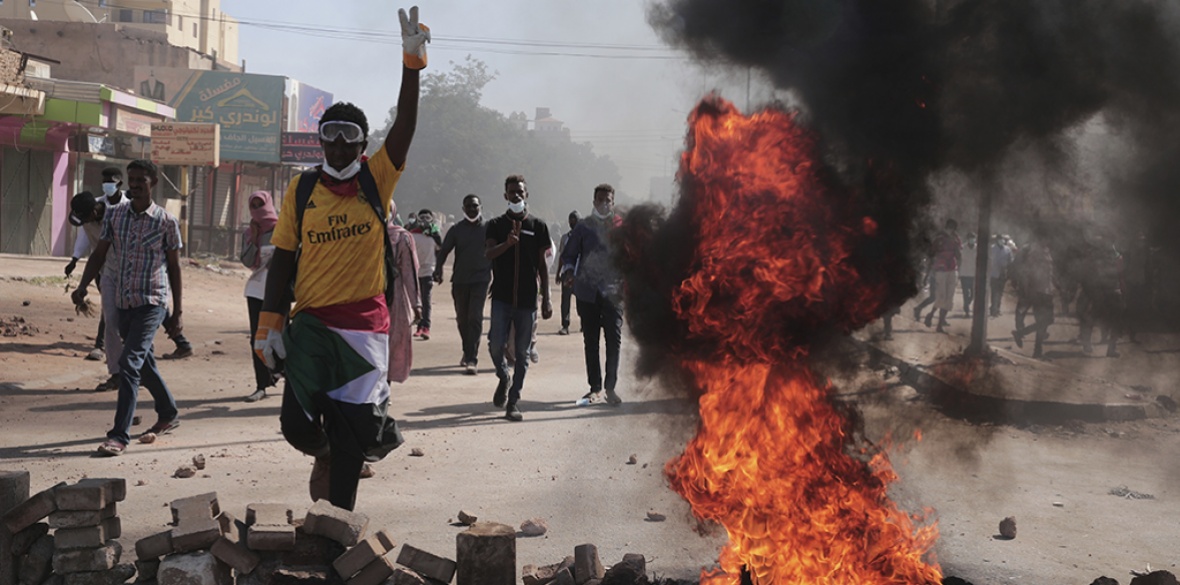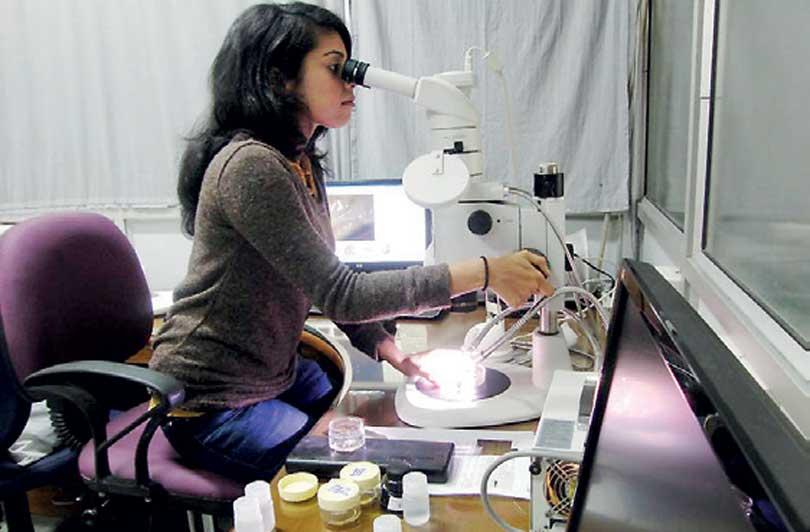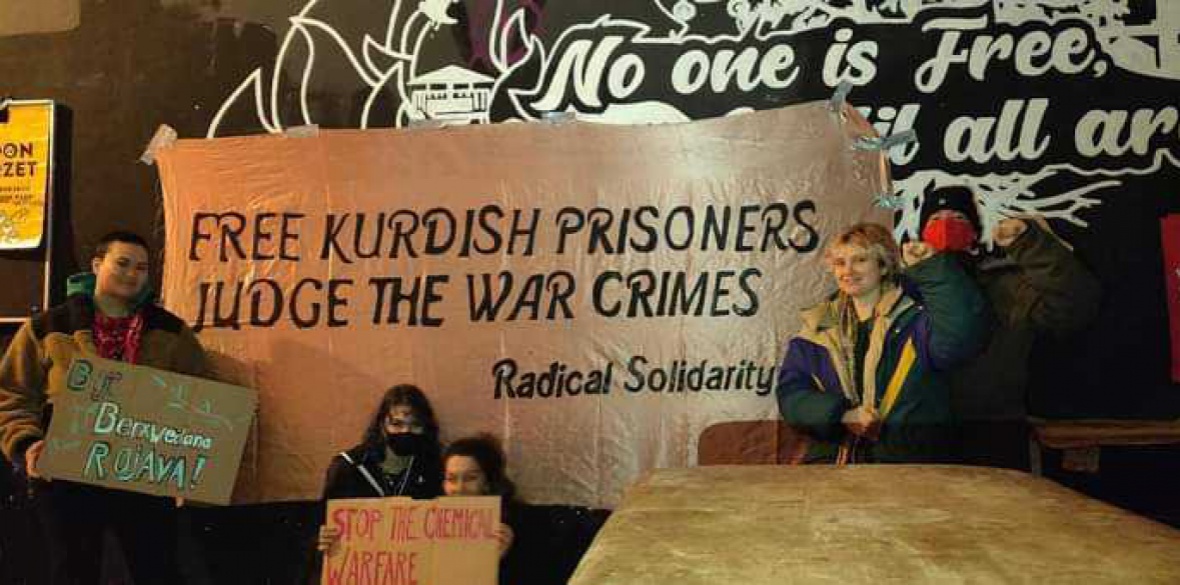Issued on: 3/01/2022
Sudanese demonstrators gather in the capital Khartoum on January 2, 2022. The same day security forces fired tear gas canisters at a thousands of protesters outside the presidential palace in the capital demanding civilian rule. © AFP
The resignation of Sudan's prime minister leaves the military in full command and threatens a return to the repressive policies of the ousted regime of strongman Omar al-Bashir, analysts say
After months of street protests and violent crackdowns that have claimed at least 57 lives, observers fear more bloodshed ahead after premier Abdalla Hamdok stepped down late on Sunday.
In his farewell address on national TV, Hamdok said he had tried to prevent Sudan "from sliding toward disaster" but that it was now at a "dangerous crossroads threatening its very survival".
"Hamdok's resignation has left the military in sole command of the country," said Magdi al-Gizouli of think-tank the Rift Valley Institute. "Protesters will take to the streets again and will be left to face more violence."

Since its independence from Britain and Egypt in 1956, Sudan, now one of the world's poorest countries, has been mostly under military rule with only rare democratic interludes.
It has been navigating a fragile transition toward full civilian rule since the April 2019 ouster of veteran president Bashir following an unprecedented wave of youth-led protests.
Bashir, who is wanted for war crimes in the Darfur region by the International Criminal Court, was jailed as Sudan took steps to rejoin the international community and obtain debt relief, foreign aid and investment.
But the already rocky transition was derailed on October 25 when Sudan's new de facto ruler, top general Abdel Fattah al-Burhan, launched a coup, detaining Hamdok and his cabinet ministers.
The power grab sparked international condemnation and a new wave of street protests, with 57 people killed, hundreds wounded and at least 13 women raped during renewed street unrest.


Burhan reversed Hamdok's ouster and reinstated him on November 21, also promising elections in mid-2023 -- but the protest movement had lost all faith in both leaders and kept up their demonstrations.
They accused the civilian leader Hamdok, a former international economist, of "betrayal" and "legitimising the coup regime".
In the weeks since, Hamdok had failed to form a new government, and local media reported in recent days that he had not shown up at his office.
Gizouli said the parties to Sudan's November deal had hoped it would "reduce the agitation on the streets" and allow them to find a way "to rework the constitutional arrangements".
"But all this did not happen," he said.
Instead, Hamdok had found himself "paralysed" and "not able to get anything done, neither politically nor administratively".
Some observers now fear the Hamdok's resignation signals a reversion to the kind of rule Sudan saw under the Islamist-backed regime of Bashir.
Sudanese analyst Kholood Khair wrote on Twitter that Hamdok's resignation "removes any facade the #SudanCoup generals can enjoy and present this coup as anything other than a reversion to the Islamo-military politics of Bashir.
"Though Sudan's future is uncertain, the clarity helps all to see this coup for what it is."

Sudan's ousted president Omar al-Bashir gestures during his trial over the 1989 military coup that brought him to power, at a courthouse in Khartoum on January 19, 2021 (AFP/ASHRAF SHAZLY)
'Stakes are high'
Following Hamdok's resignation, Britain's Minister for Africa Vicky Ford tweeted that she was "deeply saddened" by the departure of the man who "was serving Sudan and its people's desire for a better future.
"Millions have raised their voices since 25/10 coup to demand civilian rule: security forces and other political actors must now respect those demands."
The United States urged Sudanese leaders to "set aside differences, find consensus and ensure continued civilian rule.
"Sudan's next PM and cabinet should be appointed in line with the constitutional declaration to meet the people's goals of freedom, peace and justice," the US Bureau for African Affairs said.
Activists have stepped up their calls for more anti-military protests from Tuesday and called on demonstrators to again head to the presidential palace in Khartoum "until victory is achieved".


Sudan has been navigating a fragile transition toward full civilian rule since the April 2019 ouster of veteran president Bashir following an unprecedented wave of WOMEN AND youth-led protests (AFP/-)
Burhan late last month issued a decree allowing security forces to arrest individuals "over crimes related to the state of emergency" which effectively bans street protests.
It also allows security forces to enter and search "any building or individual" and impose "surveillance of any property and facility"
"The stakes are now very high," said Gizouli, who argued Hamdok had been "a possible mediator between all sides".
"Now it's an open confrontation between security forces and the old system, excluding Omar al-Bashir, and a leaderless movement on the streets based on the activism of young people."
John Prendergast, of The Sentry think tank, argued that foreign powers should not stand idly by.
"The longer the United States and European Union wait to create consequences for the actions of the military rulers," he wrote, "the more the regime is consolidating its economic and political power, to the great detriment of Sudan's population."
(AFP)

Defiant: Protesters in Khartoum
THE Sudanese Communist Party has issued an urgent appeal for international solidarity after four protesters were shot dead in Khartoum yesterday while leaders of the resistance were detained.
More than 200 people are reported to have been injured in “bloody repression” by the regime’s forces, which fired tear gas and live bullets into the crowds as they demanded an end to military rule.
At least four people were killed by the notorious Rapid Support Forces, formerly known as the janjaweed, and many leaders of the resistance committees that have been established across Sudan were detained.
The Communist Party described the latest violence by the regime as “a desperate attempt to crush the mounting mass protests movement that has grown since the military coup on October 25.”
Demonstrations have spread across Sudan, calling for a transition to free and democratic elections and an end to the armed forces’ dominant role in politics.
Protests have continued despite the reinstatement of Prime Minister Abdalla Hamdok in November as part of a deal which also provides for elections to take place in July 2023.
But the Sudanese people branded the agreement a betrayal of the revolution that ousted authoritarian president Omar al-Bashir in April 2019.
He has since been jailed and faces trial at the International Criminal Court on war crimes charges.
Hundreds were injured in Thursday’s brutality, with doctors and medical associations appealing for urgent help to save lives.
They accused the authorities of blocking the passage of ambulances and preventing critically injured people from receiving hospital treatment.
The Communist Party condemned the latest escalation and vowed to continue working with all forces to establish the broadest front of resistance and defeat the coup.
“We call for urgent international solidarity to demand an end to the bloody repression in Sudan and the immediate release of all political detainees, especially the leaders of the resistance committees,” it said.
The Communist Party of Britain sent condolences to the families of those killed during Thursday’s protests and called for the immediate release of the leaders of the resistance committees.
General secretary Rob Griffiths urged the British government to “end its support for the new regime established after the October 25 military coup and its consequential support for financial backing of the new regime by the IMF.”


 A screengrab from a YouTube video shows Boyland inside a tightly packed crowd as it tries to breach a west-side Capitol door defended by police on the afternoon of Jan. 6.Credit...The New York Times/The Black Conservative Preacher, via YouTube
A screengrab from a YouTube video shows Boyland inside a tightly packed crowd as it tries to breach a west-side Capitol door defended by police on the afternoon of Jan. 6.Credit...The New York Times/The Black Conservative Preacher, via YouTube
 Sri Lankan born young scientist Dr. Gayani Senevirathne, who has excelled in the fields of Zoology and Molecular Biology brought pride to the country, since her latest research on finding an answer to a human abnormality had gained attention in the United States.
Sri Lankan born young scientist Dr. Gayani Senevirathne, who has excelled in the fields of Zoology and Molecular Biology brought pride to the country, since her latest research on finding an answer to a human abnormality had gained attention in the United States.








